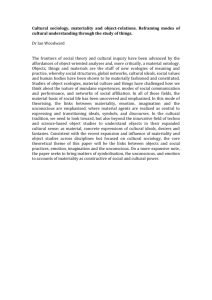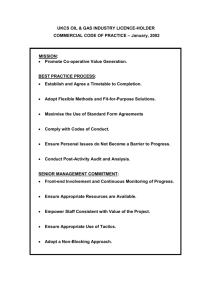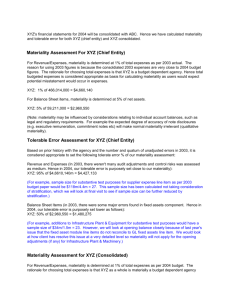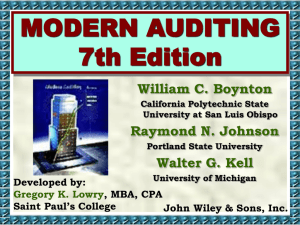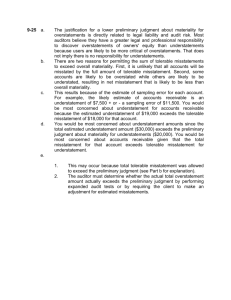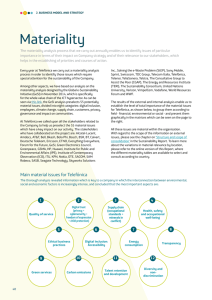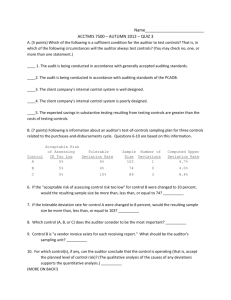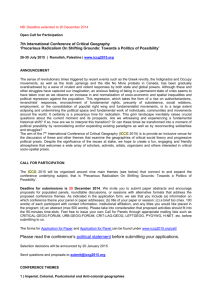Modern Auditing:
advertisement
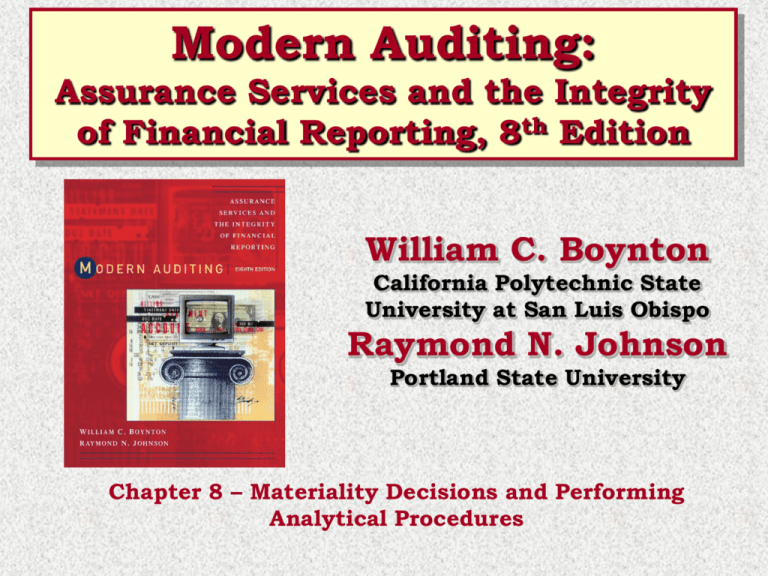
Modern Auditing: Assurance Services and the Integrity of Financial Reporting, 8th Edition William C. Boynton California Polytechnic State University at San Luis Obispo Raymond N. Johnson Portland State University Chapter 8 – Materiality Decisions and Performing Analytical Procedures Chapter 8 Overview Concept of Materiality • Auditor Considerations – Circumstances pertaining to the entity – Information needs of those relying on financial statements • Purposes for Preliminary Judgments – Scope decisions – Evaluation of known misstatements Preliminary Judgments About Materiality • Planning Materiality – Circumstances change – Additional information identified • Judgments at Two Levels – Financial Statement Level – Account Balance Level Materiality at the Financial Statement Level • Quantitative Guidelines – No official guidelines within auditing standards – 5-10% of Net Income before Taxes – ½-1% of Total Assets • Qualitative Considerations – Quantitatively immaterial, qualitatively material – Illegal act by entity Materiality – Quantitative Example Materiality at the Account Balance Level • Account Balance Materiality • Tolerable Misstatement • Material Account Balance Allocating Financial Statement Materiality to Accounts • When financial statement materiality is quantified • Must allocate to individual accounts • Balance Sheet and Income Statement accounts • Two Considerations – Material misstatement amount of account – Probable cost of verification Materiality and Audit Evidence • Sufficiency of Evidence – Inverse relationship – Lower amount of tolerable misstatement needs more evidence to obtain reasonable assurance • Evaluation of Evidence – Reevaluate preliminary materiality – Quantitative and Qualitative considerations Study Break 1. In making preliminary judgments about materiality, the auditor should assess materiality at ______ levels. A. One B. Two C. Three D. Four B. Two Study Break 2. Any amount of misstatement that is less than the level of materiality would be referred to as: A. Quantitative misstatement B. Material misstatement C. Tolerable misstatement D. Probable misstatement C. Tolerable misstatement Study Break 3. Materiality and audit evidence are said to have a(n) _______ relationship. A. Inverse B. Converse C. Obtuse D. Correlating A. Inverse Performing Analytical Procedures Identify Calculations and Comparisons to be Made • Absolute Data Comparisons • Common-size Financial Statements • Ratio Analysis • Trend Analysis • Compare Financial Information with Nonfinancial Information Effectiveness of Analytical Procedures Develop an Expectation Range • Comparable Prior Periods • Formal Budgets and Forecasts • Relationships of Financial Statement Elements • Industry Data Performing Analytical Procedures • Perform the Calculations • Analyze Data and Identify Significant Differences • Investigate Significant Unexpected Differences • Determine Effects on Audit Planning Study Break 4. This technique, often referred to as a vertical analysis, involves calculating the percentage of a related total and then comparing to expected amounts. A. Ratio Analysis B. Trend Analysis C. Absolute Data Comparisons D. Common-size Financial Statements D. Common-size Financial Statements Study Break 5. In developing an expectation range, an auditor should use all of the following, except: A. Comparable prior periods B. Formal budgets and forecasts C. Industry data D. All of the above should be used D. All of the above should be used
